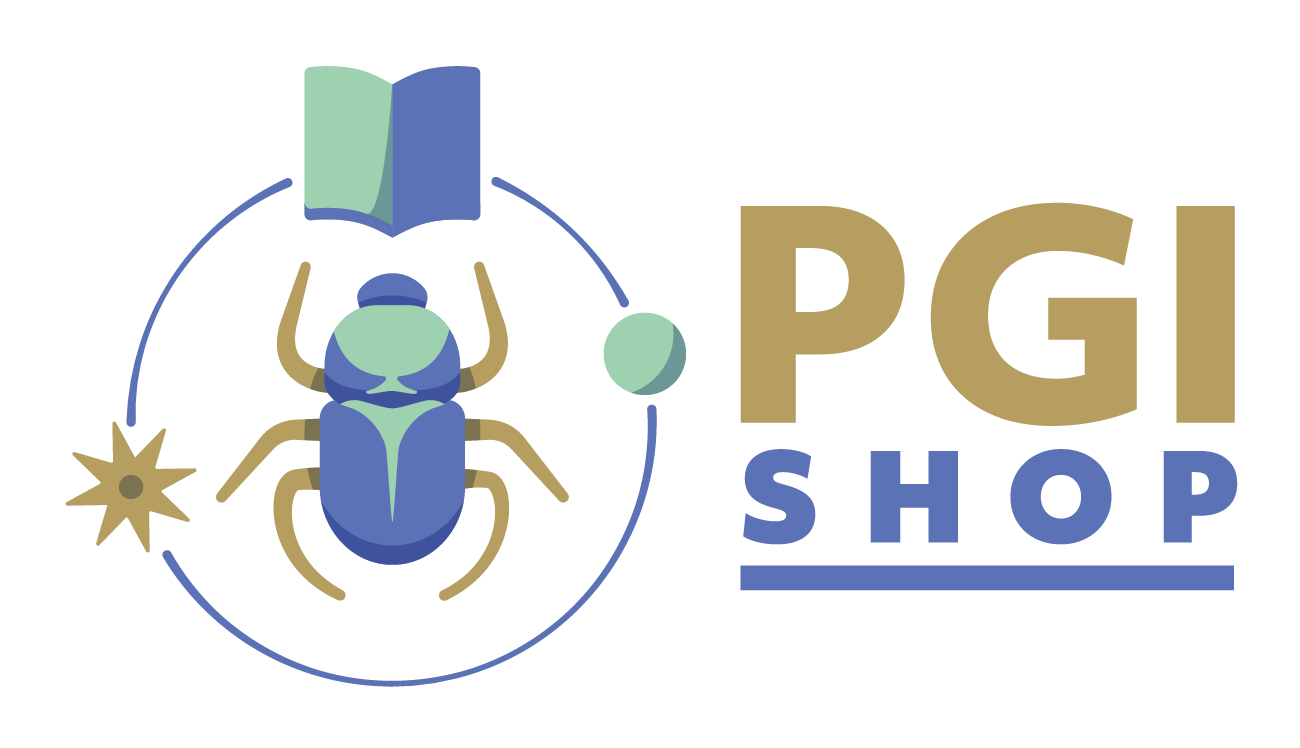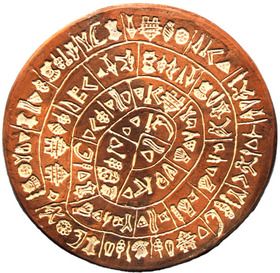The discos of Phaistos
A puzzle for science
A hit for your classroom! The enclosed worksheets can be used for lively research and guessing about the meaning of the signs.
Dimensions:
Double-sided white relief made of plaster.
Diameter approx. 16 cm.
The blank weighs approx. 400 grammes.
Incl. worksheets on the topic - in German.
The Diskos has an irregular round shape of approx. 16 centimetres. The characters are arranged on a spiral-shaped band, which is divided into different fields at irregular intervals by lines. Of the total of 242 characters on the clay disc, 123 are on the front side marked A and 119 are on the back side marked B. The characters on the back side of the clay disc are not visible on the front side. So far, only one object of this kind has been found. This uniqueness is also a major reason why the Discos continues to puzzle researchers to this day.
Almost everything that can be investigated about this mysterious piece is the subject of controversy: its age, its origin, the method of production, the writing system, the language used, the direction of writing and reading, and the contents.
In July 1908, a clay disc 16 centimetres in diameter was discovered in a chamber of the Bronze Age palace of Phaistos on the island of Crete: the famous Phaistos Disc.
While some researchers consider the text of the mysterious clay disc untranslatable, other scientists boldly dare to interpret it. Some interpret the Disc as a calendar, others as an ancient game board, a message from Atlantis or a prayer song to a deity. Our blank shows both sides of the Disc true to the original with a total of 241 spirally stamped pictorial signs.
We can distinguish 45 different stamp signs. There are different interpretations for many of these signs. What looks like a bee to one scientist is a cow's back to another and a wineskin to the next. The blank is made of plaster and can be painted in one or two colours with watercolours. The pupils have time to look at all the characters carefully. They will be able to interpret some characters quickly, others only at second glance or not at all. With the help of our information sheet and the tabular overview of the characters, your pupils will learn about the interpretations of different researchers and compare them with their own assumptions. Maybe someone will find a more plausible interpretation for the "bee"? But also the different theories on the meaning of the whole text offer interesting starting points for further work. Who can develop a working game manual for the game board theory? What could the message from Atlantis be or the prayer song to the deity? Does the list of signs work as a secret code for our letter writing?

